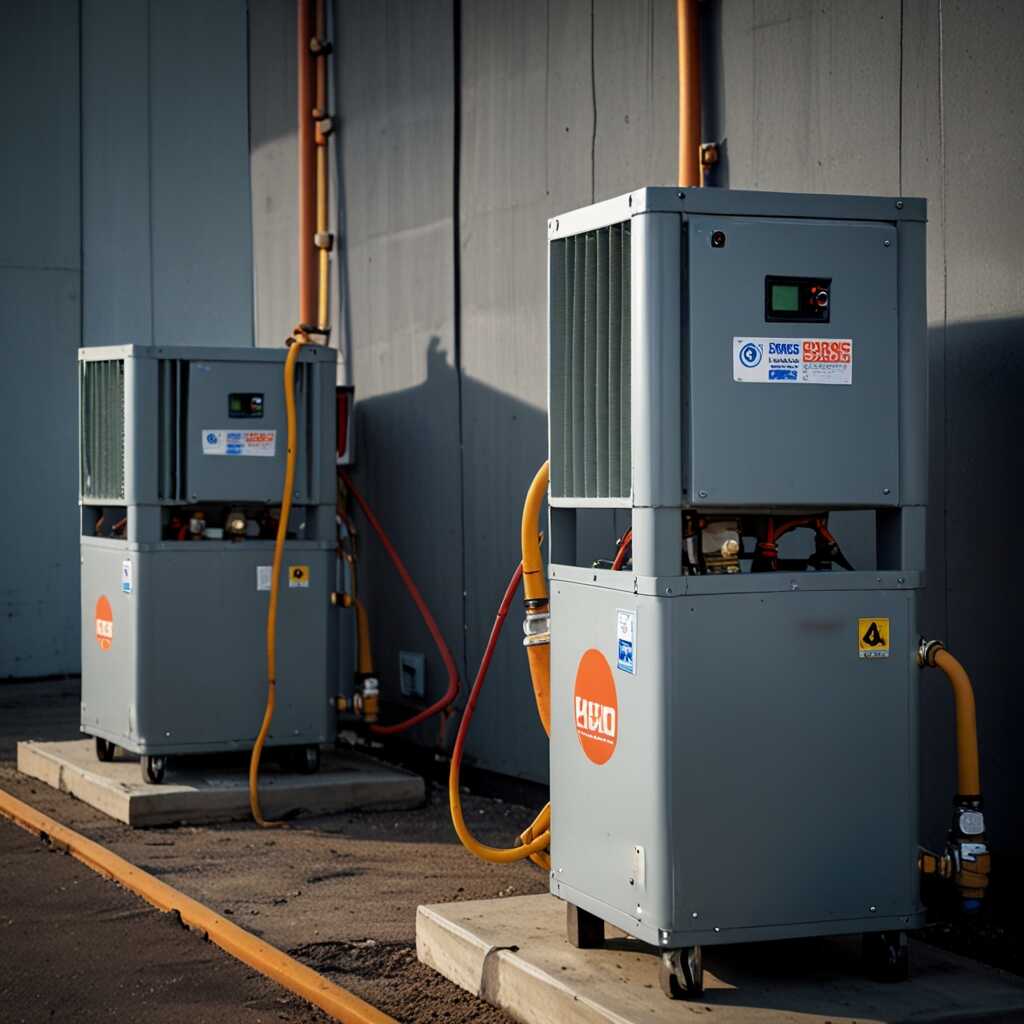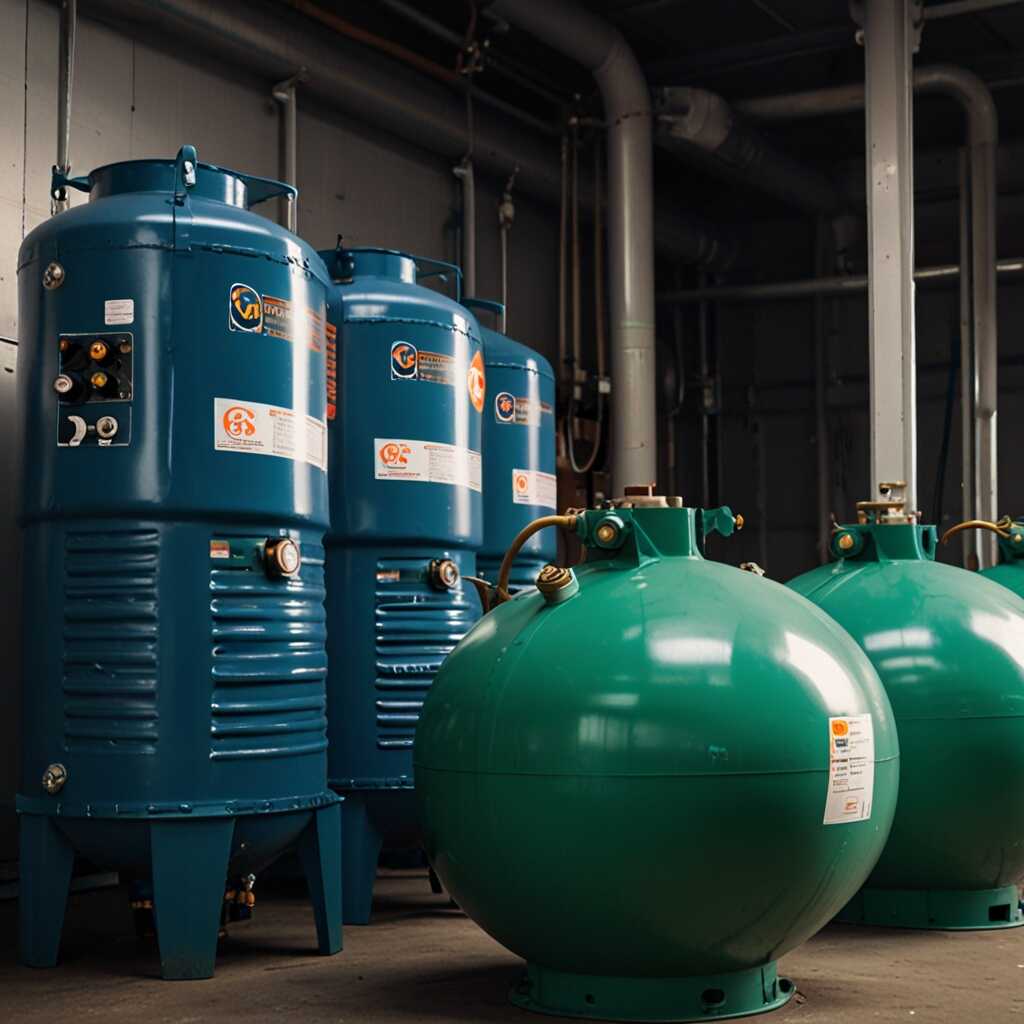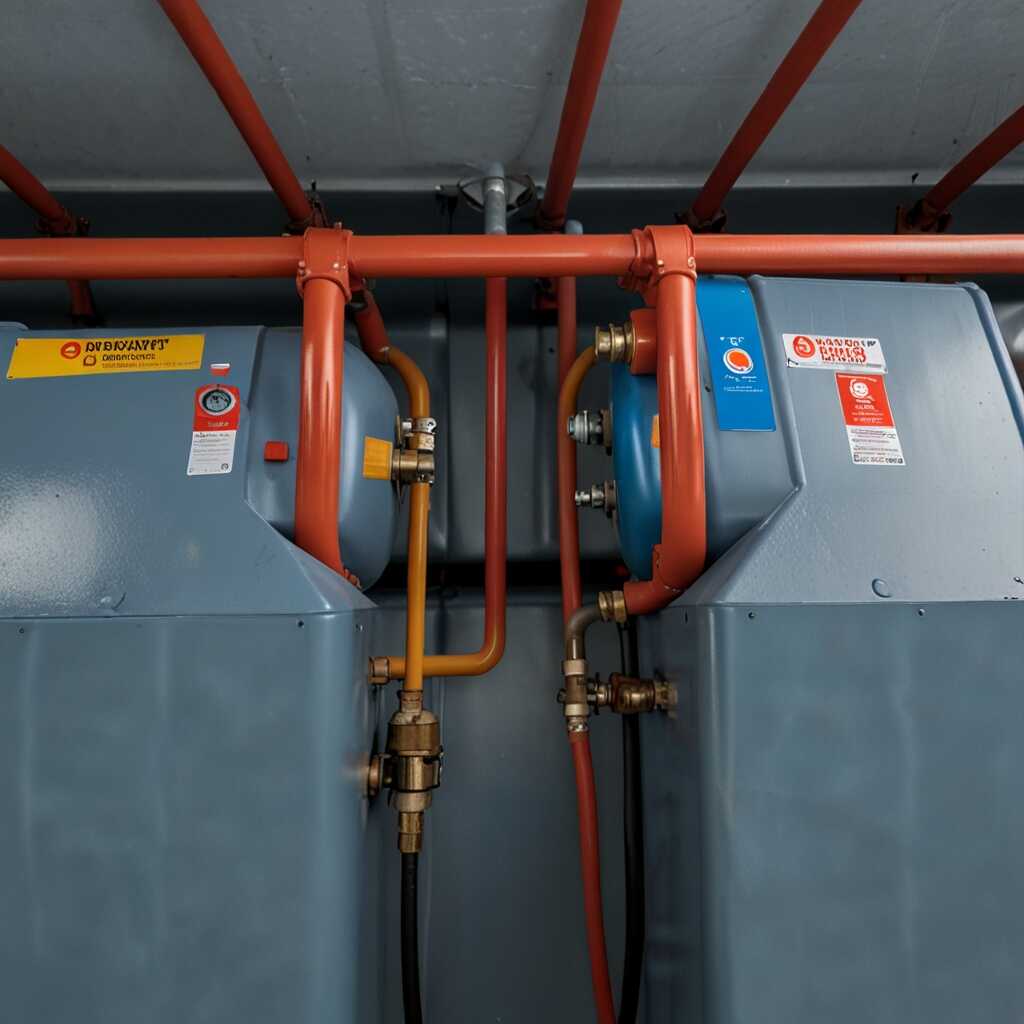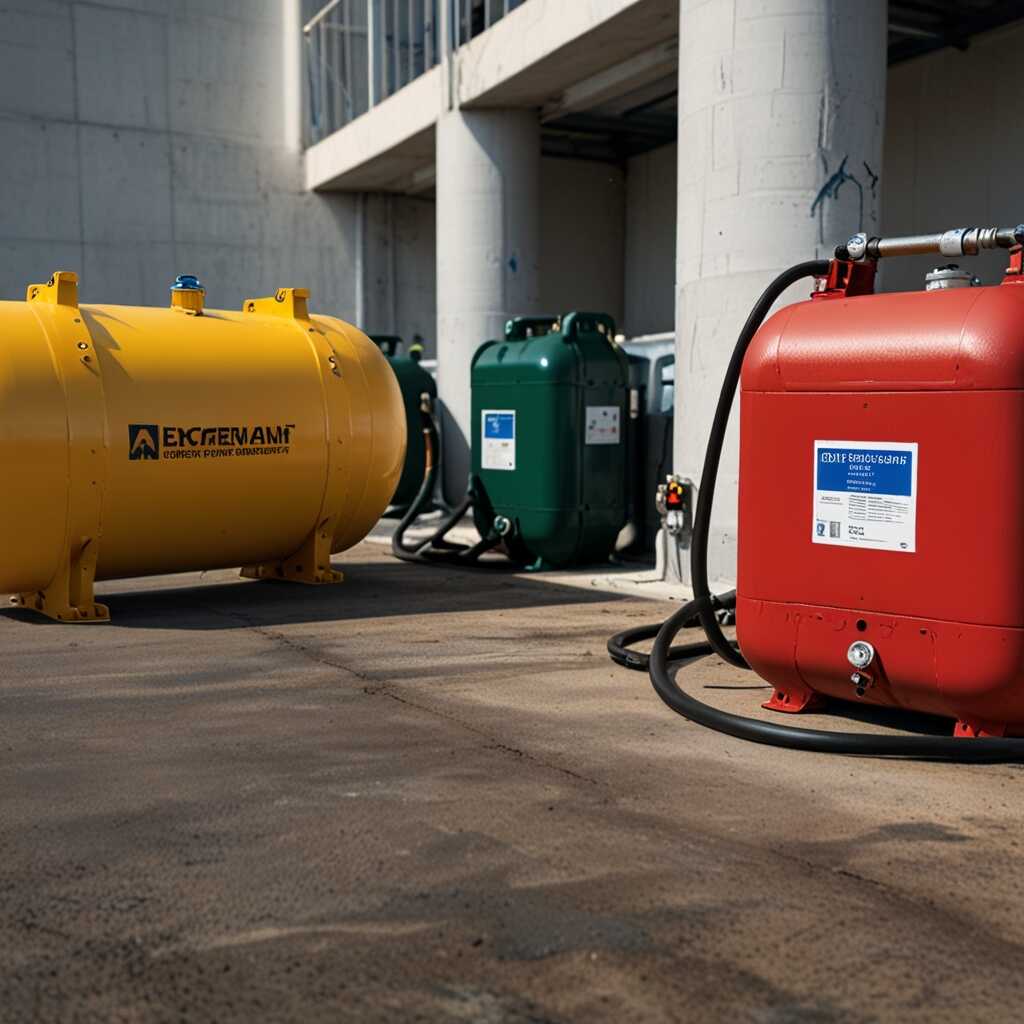Cleaning refrigerant recovery machine filters is essential for enhancing the efficiency and speed of HVAC systems. When these filters are dirty, recovery performance drops significantly, leading to longer job times and increased costs. At Refrigerant Recovery Pro, we emphasize the importance of regular maintenance to ensure optimal refrigerant recovery and compliance with environmental standards. This guide provides HVAC technicians with practical tips on why and how to clean filters effectively.
Why Clean Filters Are Essential for Recovery Performance
Clean filters are crucial for optimal refrigerant recovery performance. When filters are dirty, they restrict the flow of refrigerant, impacting recovery speed. This can lead to longer recovery times and lower efficiency during recovery operations. Research shows that maintaining filter cleanliness improves the reliability of refrigerant recovery machines and enables them to operate more effectively. HVAC professionals reported significant enhancements in recovery operations when filters are regularly maintained. Consistent cleaning translates to improved system performance and better compliance with environmental standards.
Understanding Filter Maintenance Best Practices
Proper filter maintenance is key to maintaining high efficiency in refrigerant recovery systems. HVAC technicians should regularly inspect and clean filters based on the manufacturer’s specifications. Using durable cleaning methods ensures filters can handle typical dirt and contaminants. For instance, washing reusable filters with mild solvents can restore their performance without damaging them. Technicians should also keep records of filter maintenance. Doing so provides valuable data for assessing the efficiency and durability of the equipment over time. Expert reviews often emphasize this practice for ensuring optimal refrigerant recovery operations.
Basic Overview of the Refrigerant Recovery Process
The refrigerant recovery process is crucial for HVAC services. This process ensures safe and efficient removal of refrigerants from units during maintenance or disposal. It helps to prevent environmental damage caused by refrigerant leaks. The recovery process requires specialized equipment designed to extract, store, and safely handle refrigerants. Filters play a vital role in this process by trapping contaminants. Maintaining these filters enhances the recovery efficiency, allowing the machine to operate at optimal levels. Regularly cleaning filters can significantly improve recovery speeds and extend the equipment’s lifespan.
Importance of Filter Maintenance in Refrigerant Recovery
Filter maintenance is essential for ensuring the reliability and efficiency of refrigerant recovery machines. Dirty or clogged filters can restrict airflow and reduce performance, leading to slower recovery rates. Technicians should regularly inspect and clean filters to maintain high efficiency. Depending on usage, filters should be cleaned after every few recovery sessions. This can help technicians achieve a proven percentage improvement in recovery speed. Filters made from durable materials can handle contaminants effectively, ensuring smooth operation. Choosing the right maintenance strategy ensures that recovery machines operate seamlessly and reliably.

Common Problems Caused by Ignoring Filter Maintenance
Neglecting filter maintenance in refrigerant recovery machines leads to several significant issues. Dirty filters restrict airflow and reduce refrigerant flow, creating inefficiencies during recovery. This reduction in performance can result in slower recovery times, affecting overall project timelines. In addition, unclean filters can increase wear and tear on equipment components, increasing the risk of mechanical failures. As recovery machines work harder to compensate, operational costs may rise due to higher energy consumption and potential repairs. In many cases, dirty filters have been shown to reduce recovery speed by approximately 15% to 25%, emphasizing the importance of regular maintenance.
Impact of Unclean Filters on Refrigerant Recovery Efficiency
Unclean filters directly influence the efficiency of refrigerant recovery in HVAC systems. When solid particles and contaminants clog the filters, the system struggles to maintain optimal performance. This struggle not only prolongs recovery times but also may lead to improper recovery, risking refrigerant leaks and environmental compliance issues. Regular cleaning ensures that the recovery machine performs reliably and efficiently, enabling faster project completion and lower energy costs. HVAC professionals should establish a cleaning schedule, ideally after every major job, to keep filters in top condition. Proper filter maintenance significantly enhances recovery speed and extends equipment lifespan.
Key Data Points for Optimal Filter Maintenance
- Cleaning filters can improve recovery efficiency by up to 20%.
- Regular maintenance every 6 months helps maintain performance.
- Filters should be replaced every 1-2 years, depending on usage.
- Dirty filters can slow recovery speed by 30% or more.
- A clogged filter can result in overheating of the recovery machine.
- Using clean filters can extend equipment lifespan by an average of 15%.
- Filter cleaning can save an HVAC business approximately $150 annually on energy costs.

Recognizing Signs That Filters Need Cleaning
Common signs that indicate refrigerant recovery machine filters need cleaning include reduced recovery speed, unusual noises during operation, and visible dust accumulation on the filters. Reduced recovery speed often signals that the filters are clogged and are not allowing refrigerants to pass through efficiently. Unusual operational noises may indicate strain on the machine due to restricted airflow. Regular maintenance is essential and should be performed every 100 to 200 hours of machine usage. This ensures optimal filter performance and improves overall refrigerant recovery efficiency.
Key Maintenance Tips for Filter Cleaning
To enhance reliability when cleaning filters, technicians should follow specific maintenance tips. Always turn off the machine and disconnect it from power before starting the cleaning process. Use a soft brush or compressed air to remove dust and debris without damaging the filter. Check for any signs of wear or damage during cleaning. Regular testing of the machine after cleaning ensures that performance remains at optimal levels. This proactive approach enhances the longevity of the filters, enabling HVAC professionals to achieve higher efficiency in refrigerant recovery.

Step-by-Step Instructions for Cleaning Filters Properly
Cleaning refrigerant recovery machine filters is essential for maintaining optimal performance. Technicians should clean filters at least every six months or more frequently based on usage. Use essential tools such as a soft brush, vacuum cleaner, and mild detergent to clean the filters effectively. The cleaning process should take about 30 minutes to 1 hour, ensuring thorough verification of the filter’s condition. Regular maintenance enhances efficiency and reliability, reducing downtime for repairs.
Essential Tools and Materials for Filter Cleaning
Having the right tools makes a significant difference when cleaning refrigerant recovery machine filters. You will need a soft brush to remove dirt particles without damaging the filters. A vacuum cleaner helps extract stubborn contaminants effectively. Mild detergent mixed with water aids in breaking down grease and grime, ensuring a thorough clean. Use a clean cloth for drying the filters post-cleaning. Gathering these essential tools ensures the cleaning process is efficient and results in reliable performance.
Advantages of Regular Filter Cleaning
- Increased recovery speed minimizes job time for technicians.
- Enhanced machine efficiency leads to lower energy consumption costs.
- Cleaner filters reduce the risk of equipment breakdown.
- Improved refrigerant recovery directly supports environmental regulations.
- Regular maintenance boosts worker safety during operations.
- Reduced wear and tear on machines can lower overall repair costs.
- Regularly cleaned filters improve customer satisfaction through quicker service.

Best Practices for Cleaning Products and Tools
To maintain refrigerant recovery filters, use cleaning products like environmentally safe degreasers and simple soap solutions. Avoid harsh chemicals that could damage the filter material. For tools, employ soft brushes and lint-free cloths to prevent scratching or harming the filter. Regular cleaning enhances recovery efficiency by improving airflow through the filters. When dealing with dirt buildup, thorough cleaning is needed. Conduct reviews on the effectiveness of cleaning methods to find the best practices for your system. For optimal performance, clean filters at least every 30 days, or whenever significant dirt accumulation occurs.
Choosing the Right Cleaning Agents for Filters
Selecting the right cleaning agents is essential for maintaining the longevity and reliability of refrigerant recovery filters. Non-abrasive cleaning agents like mild dish soap mixed with water can handle common dirt and grime. For grease or oily residues, a degreasing solution designed for HVAC applications provides excellent results without harming the filter material. Ensure the agents are eco-friendly, preventing adverse environmental effects when disposing of wastewater. This careful selection enhances the filter’s performance and efficiency, crucial for effective refrigerant recovery.
Long-term Advantages of Regular Filter Maintenance
Regularly maintaining clean filters in refrigerant recovery machines offers essential benefits for HVAC professionals. Increased equipment lifespan results from reduced strain on components, allowing systems to operate with greater reliability. HVAC system performance improves as clean filters enhance airflow and refrigerant recovery efficiency. Cost-saving measures arise from lower energy consumption and fewer repairs, which can significantly reduce operational expenses over time. Data shows that regular filter cleaning can increase equipment lifespan by up to 30%, providing a substantial return on investment.
Impact of Clean Filters on System Efficiency
Clean filters are crucial for optimal HVAC system performance. Dirt and debris block airflow, causing compressor strain and reducing refrigerant recovery rates. Regular filter cleaning enhances the capacity of refrigerant recovery machines by ensuring smooth airflow and efficient operation. Maintaining filters allows systems to handle higher workloads without overheating. Filters should be cleaned every month in high-use environments to maintain high efficiency. This simple maintenance step delivers impressive results, ensuring systems remain reliable and cost-effective.
Prominent Brands and Their Applications in the Industry
- Brand A offers compact recovery machines for residential use, ideal for small jobs.
- Brand B focuses on larger commercial units, suitable for extensive HVAC setups.
- Brand C specializes in eco-friendly recovery equipment, promoting regulatory compliance.
- Brand D’s advanced filters are known for their longevity but come at a higher cost.
- Demographics interested in this topic include HVAC contractors looking for efficiency.
- Technicians working on commercial projects often need specialized filter systems.
- Environmental officers prefer brands focusing on sustainability for compliance.
Guidelines for Filter Replacement and Maintenance Frequency
HVAC professionals should know key indicators for replacing versus cleaning refrigerant recovery machine filters. Indicators like reduced recovery speed or visible dirt can signify a needs for cleaning. Filters might require replacement when they are damaged or have severe blockages. Common filter types, such as mesh and pleated filters, differ in their maintenance requirements. Mesh filters can typically be cleaned multiple times, while pleated filters may need replacing after several uses. For optimal efficiency, clean filters every three months and replace them at least once a year or sooner if they show signs of wear. Utilizing a reliable cleaning technique can enhance overall refrigerant recovery efficiency and performance.
Understanding Filter Types and Their Specific Maintenance Needs
Understanding specific maintenance needs for different filter types enhances overall refrigerant recovery performance. Mesh filters are sturdy and designed for repeat cleaning, making them cost-effective and reliable. They often require cleaning when a noticeable drop in recovery speed occurs. Pleated filters, however, capture finer particles but have limited cleaning capabilities. These should be replaced more frequently, especially in environments with higher debris levels. Regularly reviewing and testing filter performance ensures your equipment functions at its best. Effective maintenance plans improve refrigerant recovery rates and prolong the lifespan of your machines.